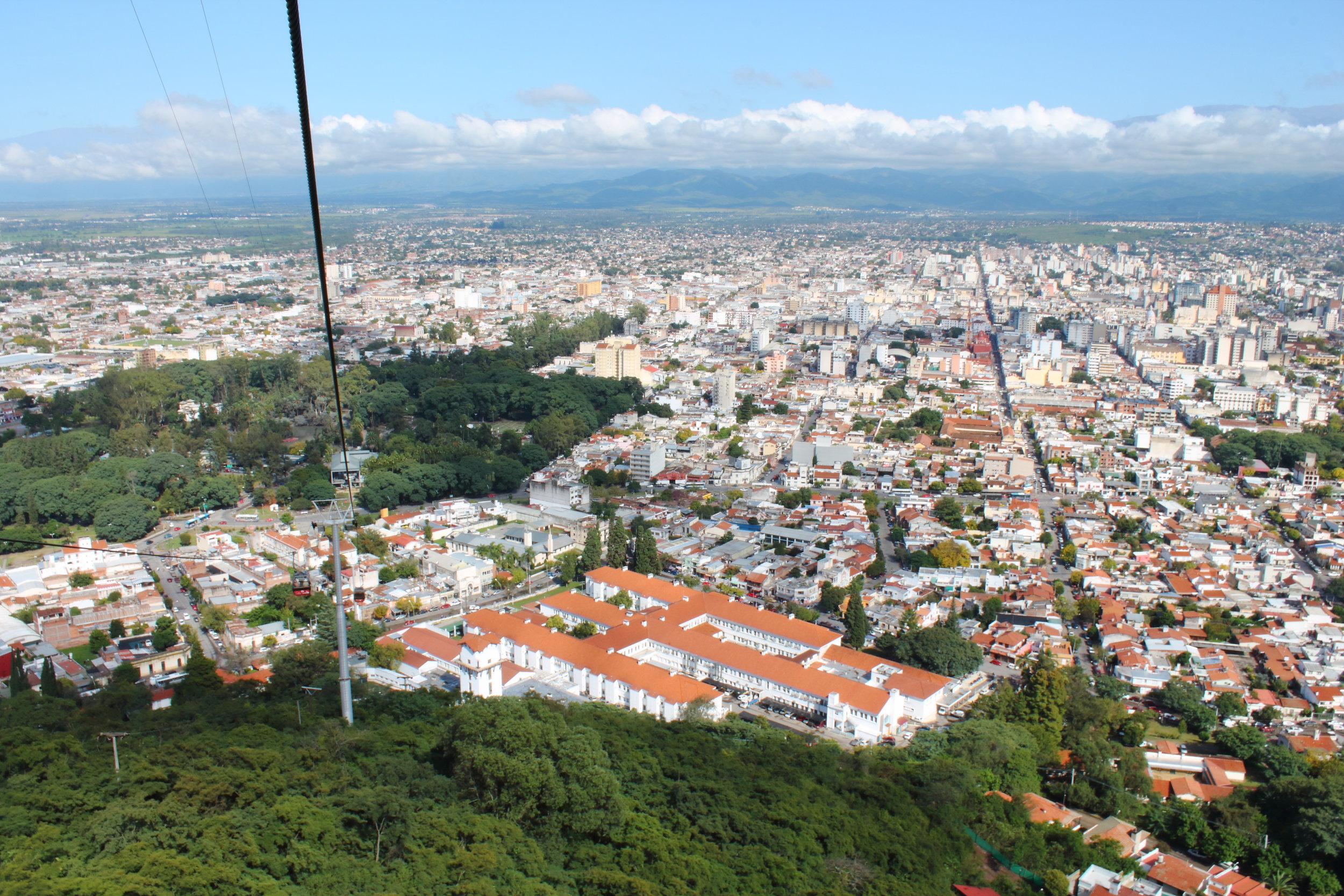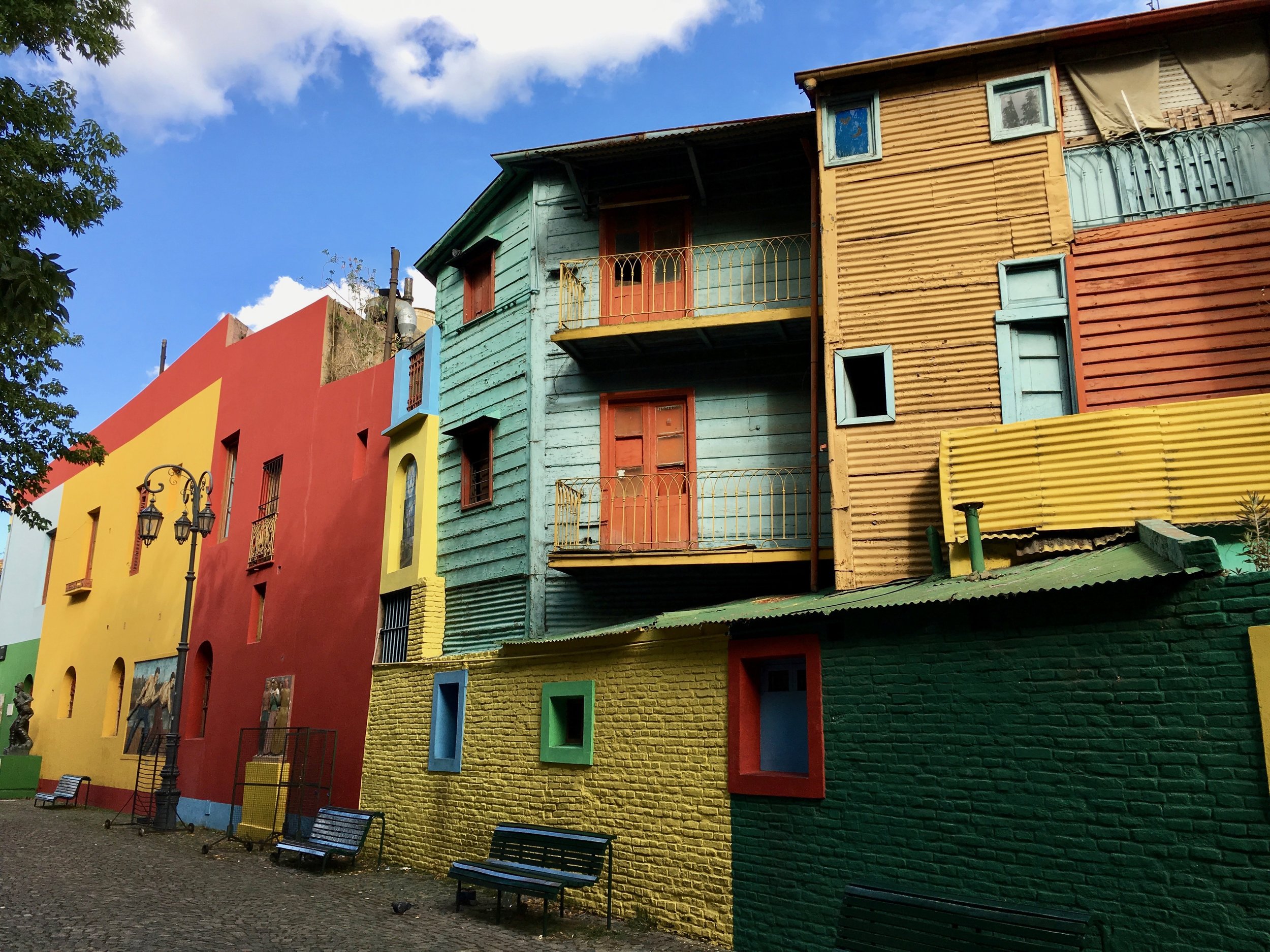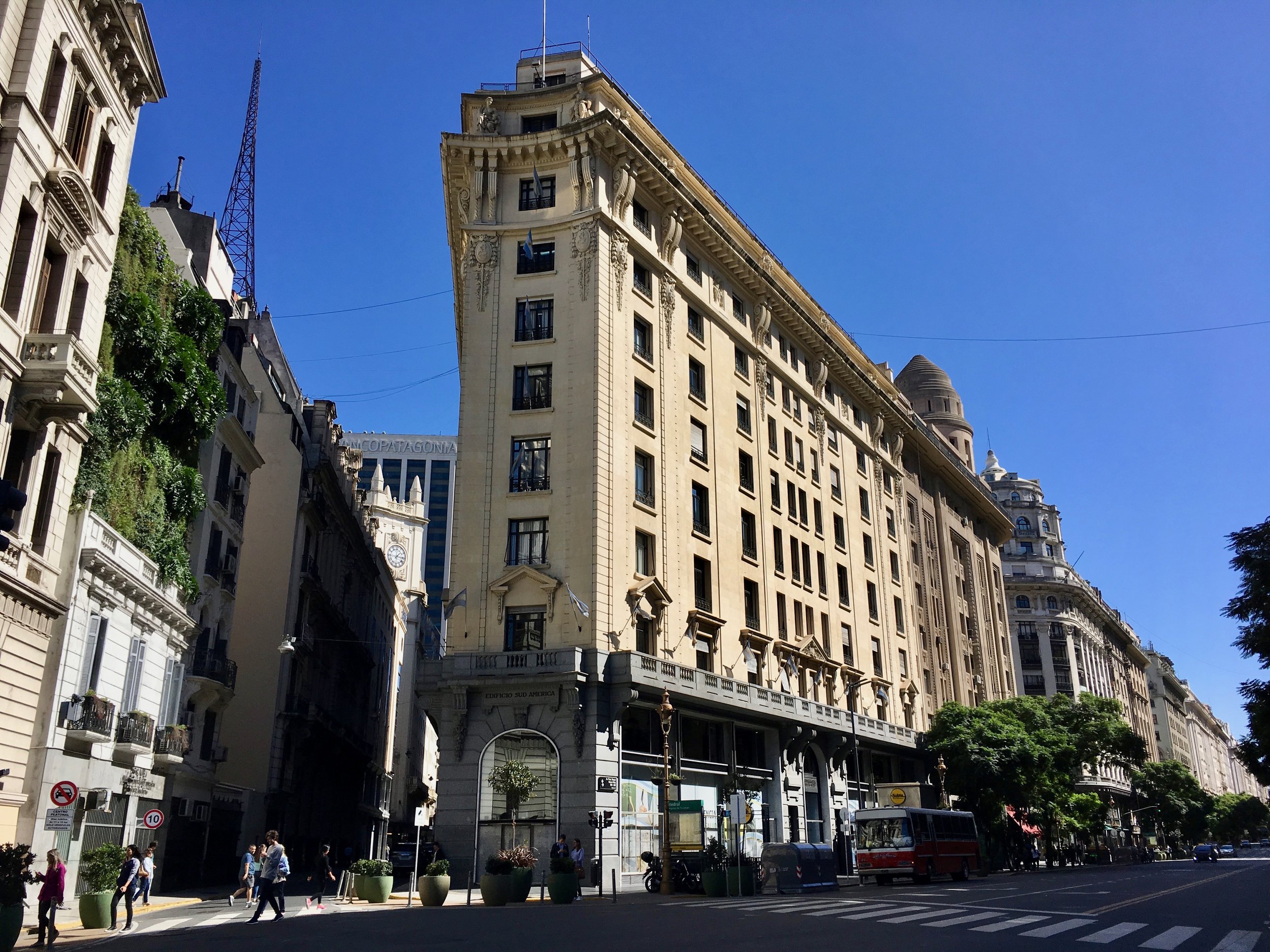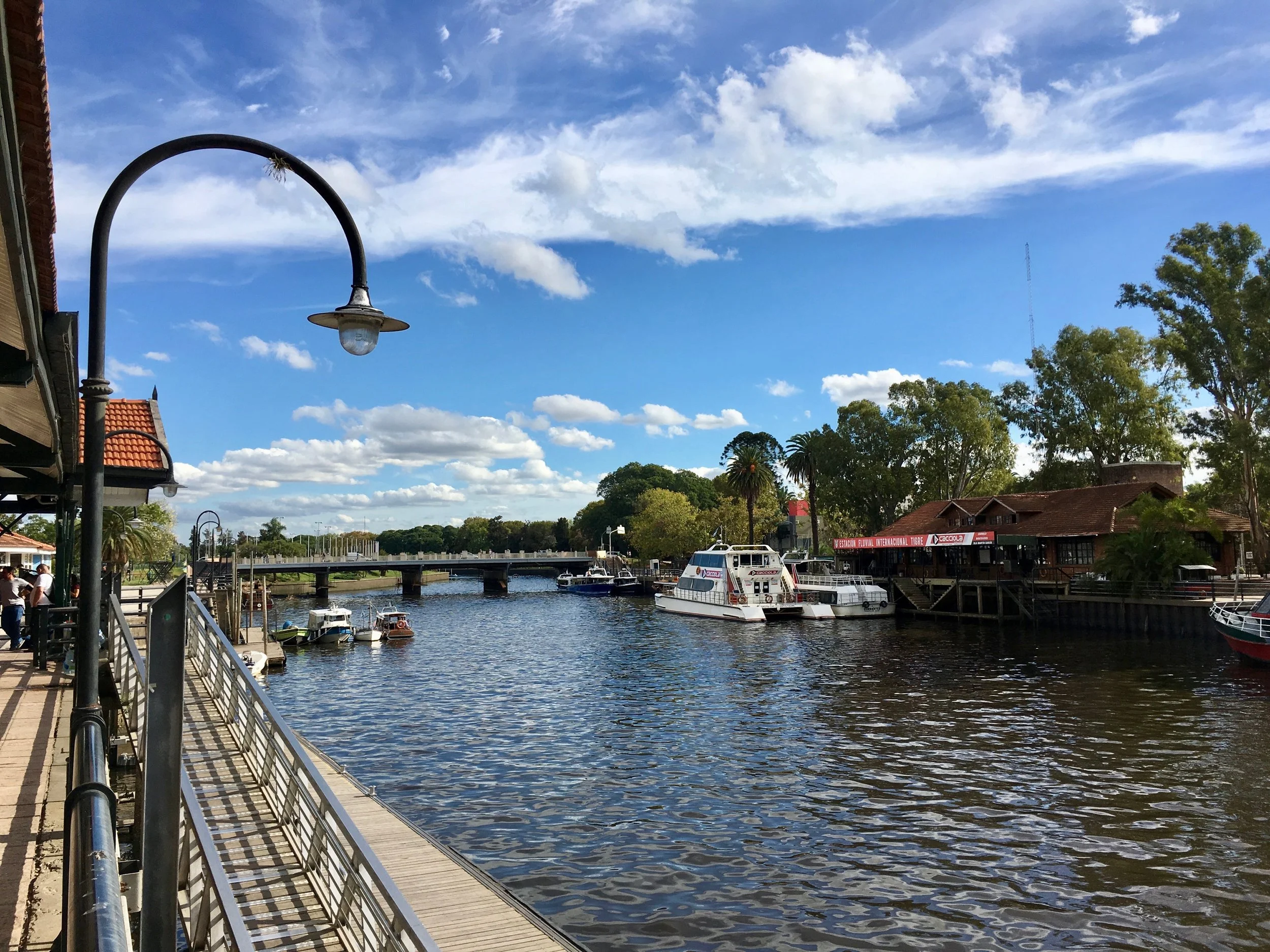Flying around Argentina
Itinerary: Salta > PN Los Cardones + Cachi > Buenos Aires > El Calafate + Los Glaciares National Park
Crazy cacti and colorful canyon? Check. Stunning city and fantastic food? Check. Fabulous fall colors, beautiful blue lakes and a ginormous glacier? Check, check and check.
My main motivation for visiting Argentina (and subsequently Chile) was to get to Patagonia. If you knew me really well, you’d have known this had been my more-than-mild obsession in recent years. (Before people could even finish the question, “If you could go anywhere in the world…” I’d hastily blurt out “Patagonia!”)
Only as I made my way south and dug into the Argentina chapter of my Lonely Planet guide, I realized the wide variety of landscapes and attractions the country had to offer, and I was, yet again, faced with the conundrum of what I can reasonably see in the time I’d allotted myself. (This will be a recurring theme in this blog, if you haven’t already noticed…)
Fortunately for me, my decision was more or less made for me by having two family visits planned: a week in Buenos Aires mid-month with my parents, and a backpacking trip with my brother at the end of the month. Trying to squeeze in whatever else I could, I wasted no time on long haul buses and hopped around on flights to make the most of my time. Also, have you seen a map of Argentina? It’s not small…
Coming from Bolivia, Salta was a natural first stop. It is centrally located for exploring a few national parks, and it also has its own colonial charm with colorful churches and calm plazas. I spent a day wandering around the city, taking the teleferico cable car up Cerro San Bernardo for views of the city, and poking my head into churches. Sorry, museum lovers: I did not make it to the Museo de Arqueología de Alta Montaña, which explores the Inca culture of child sacrifices and apparently has a (controversial) exhibit of a mummified child.
Maybe my most triumphant moment in Salta was sharing mate (pronounced mah-tay) with some Argentine folks at my hostel. I’d first been introduced to this Argentine addiction on a beach in Costa Rica when fellow travelers offered up their wooden cup and piping hot metal straw, inviting me to try what looked to be 85% loose-leaf green tea and 15% boiling water. Going with the ‘when in Rome’ mentality and stifling everything I’d been told about accepting drinks from strangers (sorry Mom!), I gave it a sip, and the profferer seemed genuinely surprised that I didn’t hate it, apparently the usual response for yerba newbies. What I didn’t realize on the beach and later found out in Salta was that the mate drinking tradition dictates you’re meant to finish the full cup, and only then will the server pour the next for the following person in the social circle. For an absolutely brilliant writeup on this quirky tradition, please check out this post by Along Dusty Roads.
On my second day, I’d really wanted to do a hiking outing with Norte Trekking, a more outdoors-oriented outfitter for exploring the national parks, but due to availability constraints, I simply booked the standard Parque Nacional Los Cardones + Cachi day trip through my hostel. After being captivated by the frailejones of Colombia’s El Cocuy National Park, I was very keen on seeing the cardon grande cactus, the park’s namesake. Cachi, a small white-washed, tranquil town, was just an added bonus. Although the tour unfortunately required a lot of sitting in a bus, the drive through the Enchanted Valley was quite scenic.
The next morning, I jumped on a fast flight to Buenos Aires and just a few hours later, I was enjoying the blissfully brief and breezy ride into the city center from the domestic airport, complete with a drive-by tour of pretty Palermo parks. After my parents and I reunited and settled into our hotel room (thanks Mom and Dad!), we set off for a free walking tour of the Recoleta neighborhood. Our frenetic and fascinating guide Jimena weaved in historical narratives as we wound our way through the very European-looking streets. I quickly came to understand how Buenos Aires curated the reputation as the ‘Paris of South America.’
That night, we indulged in a decadent dinner at a closed-door restaurant, an experience I cannot rate highly enough. Not only was the food at La Cocina Discreta delicious and downright beautiful to behold (my sneaky iPhone shots don’t begin to do it justice), the whole experience from the nondescript entrance to the pacing of the courses to the interesting audio pairing at the end (?!) was just phenomenal. And I don’t even consider myself a foodie!
Furthering our historical understanding of this beautiful city, the following day we dropped into the stunning El Zanjón de Granados museum in the San Telmo neighborhood (check tour times before going), and then ventured to La Boca to tour the colorful Caminito. For dinner, we feasted on empanadas at the nondescript but delightful La Cocina.
Next was a day wandering through Palermo’s parks and enjoying a wonderful wine-tasting-and-food-pairing with Wine Discovery. Right up there with our closed-door dinner, this was one of my favorite experiences of Buenos Aires — Wine Discovery is a husband-and-wife team offering a wine tour of Argentina right out of their lovely apartment. Bertie is a sommelier with a sense of humor, and Abigail is a fabulous chef who was kind enough to make vegetarian substitutes for me. After digesting, we did the classic Argentine steak dinner at Parrilla Don Julio, which fortunately had a non-carnivore pasta option.
We rejoined Jimena the following morning for our second free walking tour, this time around the main downtown area for deep dive into Argentine politics. To refuel after all the walking, we indulged in a delectable pizza at the famous Pizzeria Güerrin. On Sunday, we made the excursion out to Féria de Mataderos, and while the stage area and dancing was pretty entertaining, I thought the fair was otherwise a tad underwhelming for the travel time required to get there. Good food though!
Also on Sunday, we attempted to experience the religiosity that is soccer in South American (ahem, fútbol), but due to an unfortunate snafu with the tickets, we were unable to attend the River Plate game. On the bright side, we got a taste of the fierce team loyalties and rivalries from a few chatty cab drivers, one of whom told me ‘he wouldn’t be my son,’ when I asked whether any of his kids dared root for another team.
Winding down our time in the beautiful Buenos Aires, we took a day trip to explore the Tigre township and peaceful river delta. Our last day we strolled around the Reserva Ecologica, a nice, huge park in the seaside Puerto Madero neighborhood. Then it was goodbye to my parents who patiently allowed me to drag them all around the city, and hello to PATAGONIA!!
As a brief point of clarification, Patagonia is a vast region at the southern tip of South America that encompasses multiple national parks and extensive wild terrain across both Argentina and Chile. For some, Patagonia is synonymous with Mount Fitz Roy in Argentina’s Parque Nacional Los Glaciares North, as popularized by the infamous apparel logo. For others, it’s Chile’s PN Torres del Paine, which boasts stunning towers and bright blue glacial lakes. And then of course, there’s the massive Perito Moreno Glacier of PN Los Glaciares South. This is all to say that it is ALL Patagonia and stunning and wonderful and well worth the region’s often brutal weather.
I flew into El Calafate and immediately booked transport to PN Los Glaciares South the following morning. I knew to expect rain and wind, especially arriving so close to winter. What I didn’t anticipate was the stunning fall colors and how vivid blue the glacial lakes would be on a stunning sunny day. The park has these great wooden platform walkways that take you along the lake and all around the impressive Perito Moreno glacier — so huge and so blue! After pining over Patagonia for so long, my first glimpse did not disappoint.
With a few extra days, I would have loved to make it up to El Chaltén to see the legendary Mount Fitz Roy and hiking trails of PN Los Glaciares North. But the Torres beckoned, and my brother and I answered… More to come!!
Next Stop: Chile
DETAILS, TIPS & TRICKS
What I DIDN’T See
Here are a few things that I’d originally had on my list to see but had to whittle down. Iguazu Falls on the border with Brazil look fantastic, but definitely remote — probably worth flying to versus taking the several-days’ trip from Buenos Aires. Mendoza is the lovely wine region, which we were fortunately able to explore through our Wine Discovery BA experience. Cordoba is a natural stop between Salta and Buenos Aires, a good way to break up the trip if traveling by bus and apparently a nice city to tour around (as told to me by other travelers). Bariloche is highly rated for skiing, but since it wasn’t quite winter, I didn’t feel too bad passing over it. And finally, road-tripping Ruta 40 through Patagonia is supposedly supreme. Would definitely love to go back for that journey and stop in El Chaltén to see Fitz Roy.
Money, money, money
Argentina on the whole is more expensive than other South American countries, but if you’re mentally prepared for it, you won’t get sticker shock. It’s well worth the added expense! Best to get an ATM card that reimburses fees because Argentine ATMs have exorbitant charges and stupid withdrawal caps. Expect long haul buses to be pricey (but very nice!) — sometimes it’s worth it to just fly, assuming you can avoid hefty luggage charges. Also for buses, you’re expected to tip the attendants for stowing your luggage as well as retrieving it; plan to have small Argentine bills on hand. Uber is available in Buenos Aires, which can help you save money on cab fares (especially during rush hour). The public transit in B.A. is also totally user-friendly and cheap. Just buy a rechargeable SUBE card from any metro station; if you’re traveling in a group, you can share a card between people to avoid paying for multiple. More information here.
Border Crossing to Chile
Although a little slow-going, not much to report. Having booked a bus fare from El Calafate to Puerto Natales, my brother and I simply followed the bus driver’s cues for when to get off and on. We got stamped out on the Argentina side and loaded back onto the bus to be stamped in on the Chilean side. We sent our bags through a quick security screening, but no one seemed to even blink at the dehydrated meals and packaged foods we were bringing in. Expect the process to take some time, no matter what time the bus company quotes. If you’re planning on heading straight to Torres and skipping over Puerto Natales, make sure you take the earliest bus possible from El Calafate because the last bus to the park is in the early afternoon, and although the bus ride isn’t long, the border crossing takes time.
Accommodation
Salta: Che Quara — This hostel is nothing to write home about, and the showers are hot but otherwise not great. However, the staff working there when I visited were super laid back and nice to chat with. The WiFi works well; kitchen is tiny but usable; free breakfast is rife with dulce de leche in true Argentina form; bunks are passable with a spacious room; location an easy walk from the main town square. And as with most hostels, can easily book tours with reception.
Buenos Aires: Sheraton Libertador Hotel — I was treated to a nice stay by my parents, so I don’t have much to say about the hostel scene in B.A., but I can highly recommend staying in this area. Easy walking distance to the obelisk, Recoleta and the political downtown sites, as well as super convenient public transit stops everywhere.
El Calafate: Bla Guesthouse — Highly recommend. Cozy beds and dorms and nice common area. Fantastic kitchen area and decent free breakfast. Good location for walking to the restaurants and bars, but off the main street, so not noisy. Hot showers! No storage lockers, but not really an issue in El Calafate.




















































































